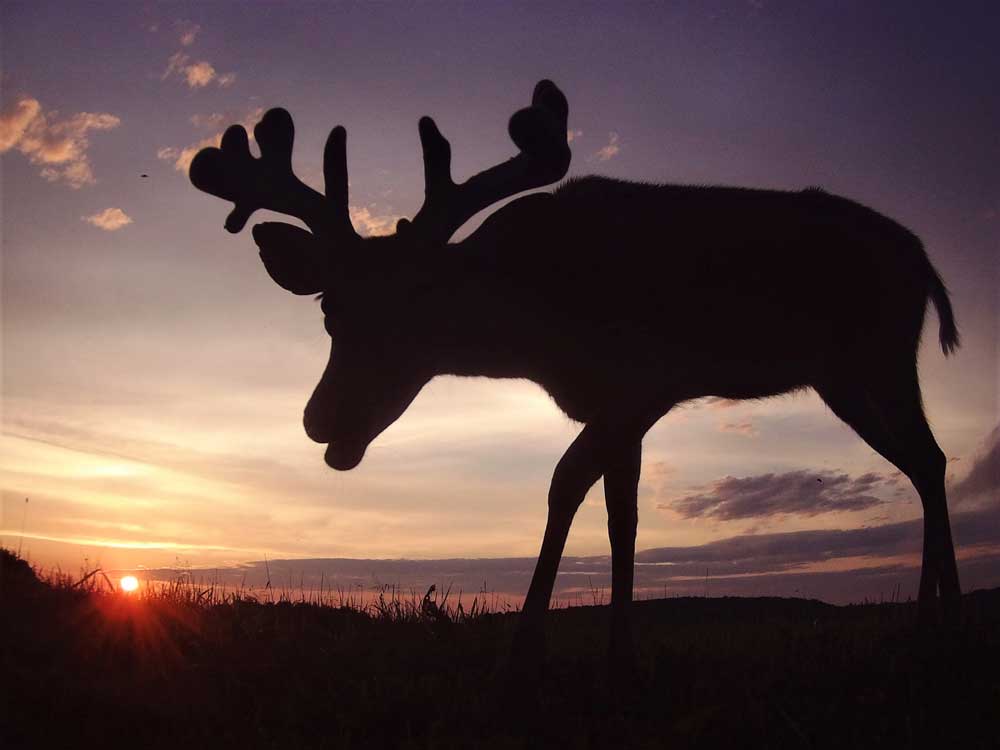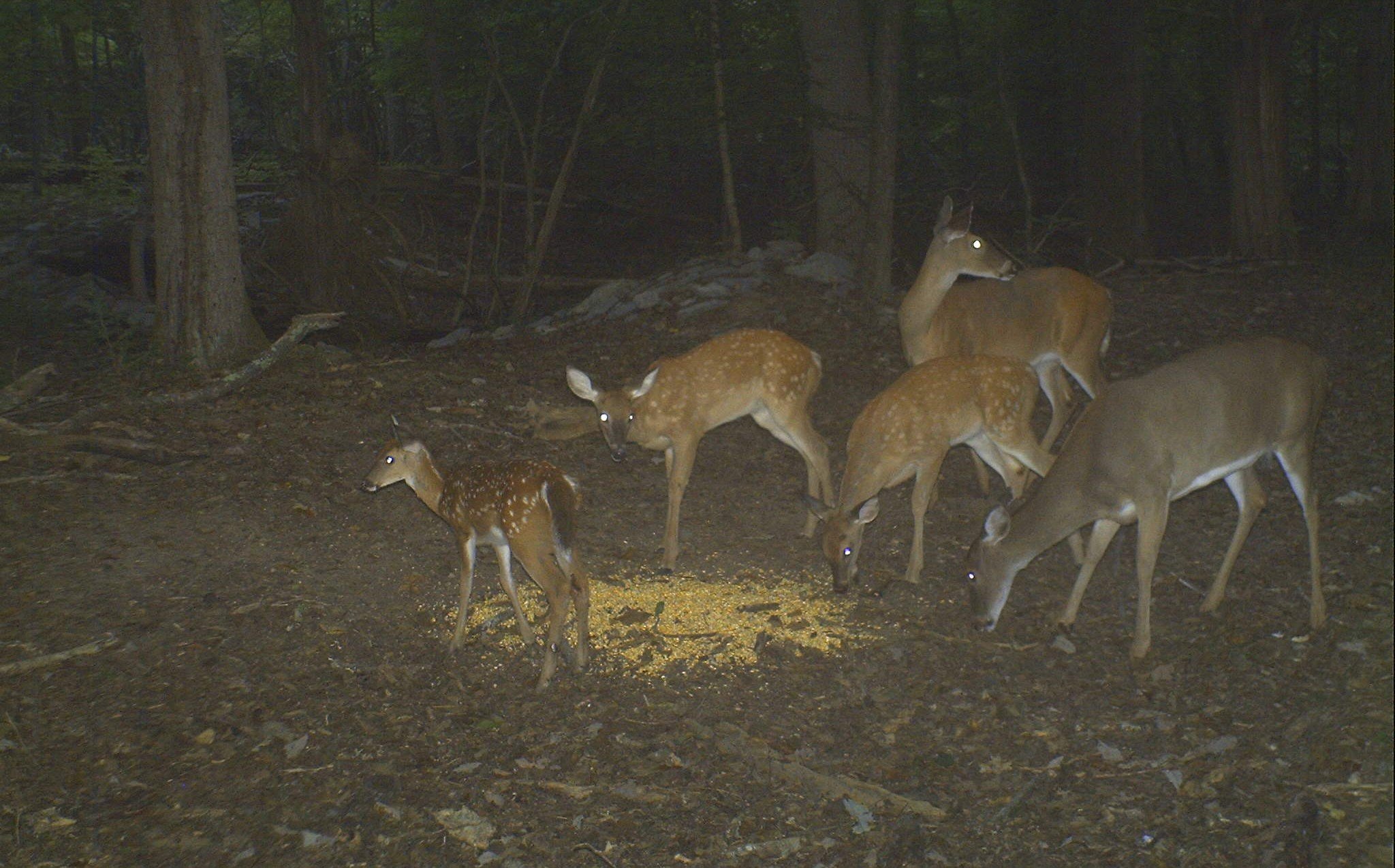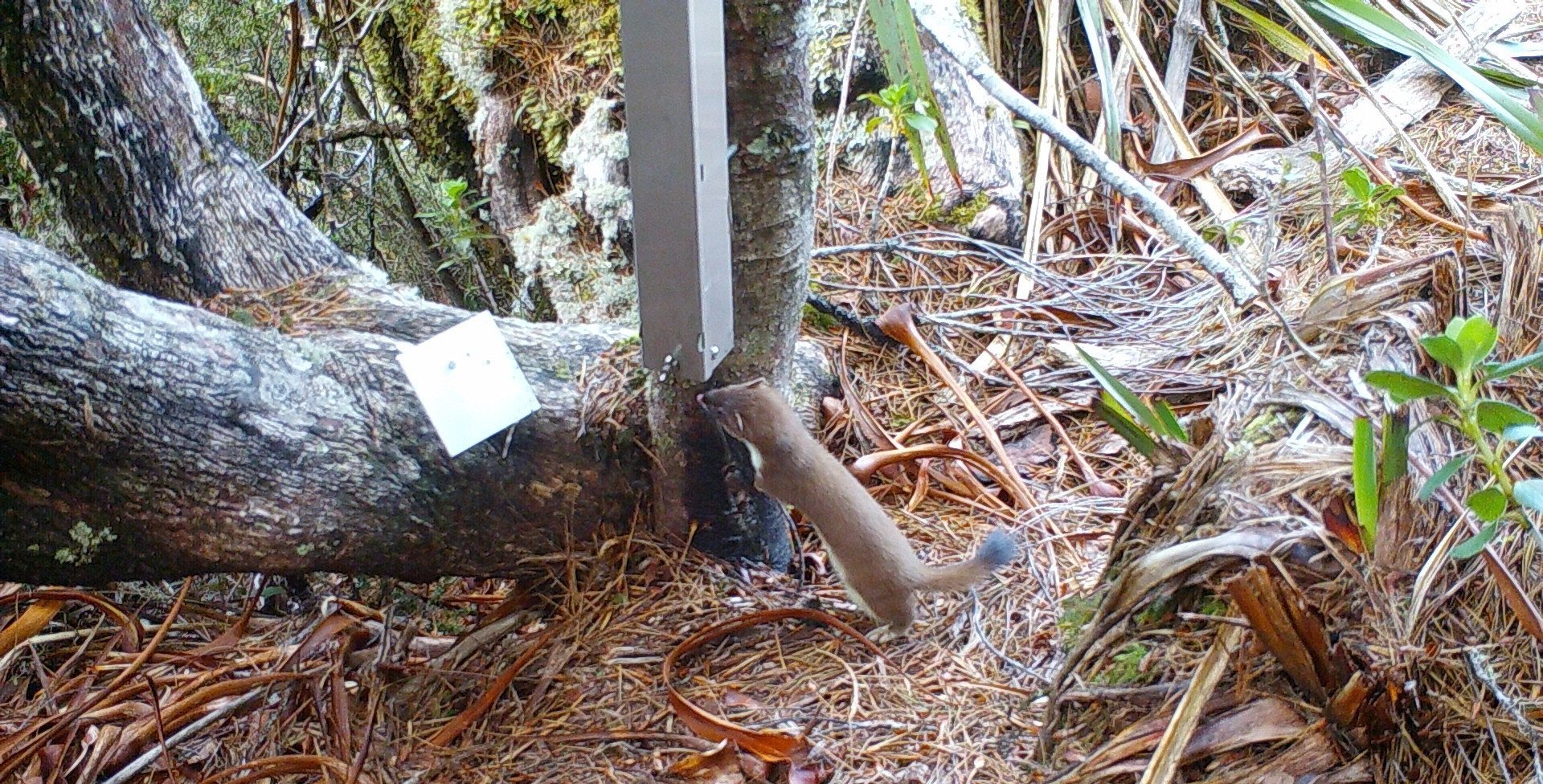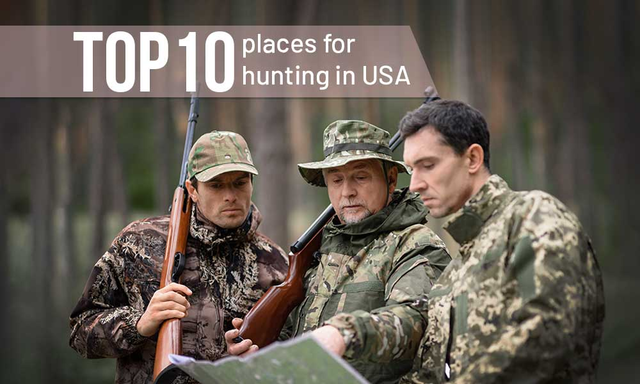Last Updated on
Observing wildlife in the outdoors, first-person, is a great way to learn about nature and feel unity while also resting from the city’s loudness. However, today, we live in a technologically-driven world where progress never stops. In the last quarter of the century, devices that allow humans to peep into nature’s secrets, such as quadcopters, waterproof cameras, and trail cameras, have become widely available.
In this post, we’re discussing trail cameras as the most powerful tool for studying wildlife. If you’re a hunter looking for ways to learn about the community of whitetails on your property, a birdwatcher studying nest predators, or any other kind of nature lover taking a scientific approach, this post is a must-read. Enjoy!
Table of Contents
Wildlife Monitoring
Trail Camera Survey for Deer
Using Trail Cameras for Monitoring Other Animals
Conservation
Habitat Evaluation
Security & Surveillance
Laws & Ethical Considerations
Trail Camera Use in Wildlife Monitoring
You can study a particular species from lots of angles. Let’s take the white-tailed deer, the most popular game animal in the US. The industry built around deer hunting is huge, so no wonder managers, landowners, and hunters are interested in surveying their quality and abundance and collecting data for management program improvement. Camera traps are great aids here that allow, based on the obtained data, to manipulate deer harvest rates to adjust abundance, age structure, and sex ratios.
When estimating population density and size, you must keep in mind that trail cameras aren’t perfect. You’re unlikely to capture every deer living on the land. So the best way to think about the number of deer obtained from trail cameras is a minimum count. However, the right procedure can help you get your data closer to reality.
Trail Camera Survey for Deer
Time. Usually, camera surveys are conducted either right before deer season starts or immediately after it ends. Preseason surveys are more popular as they are a great way to prepare for the hunting season. It’s also easier to identify fawns at this time. However, the disadvantages include abundant native food competing with your bait, and bucks shifting their behavior during the late summer, which means you might not see individuals identified on your preseason survey later. On the contrary, it is much easier to attract deer to your bait sites during the postseason. This period also gives a good snapshot of survived deer. The disadvantages are that fawns can be hard to distinguish, and some bucks can drop one or both antlers before the end of the survey.
Equipment. Specialists suggest 1 camera per 100 acres is enough to capture most deer on medium-sized properties (up to 1,000 acres). For large properties, you need 4-5 cameras per 160 acres that you’ll systematically move or rotate every 10-14 days until you cover the entire property.
Take a map or aerial photo of your property and mark off a grid to obtain 100-160-acre blocks. These blocks are the places where your cameras will go. For better structuring, identify each block with a number or letter and program your cameras to mark photos according to the identifiers; also, record GPS waypoints when changing camera stations.
Camera Placement and Baiting. Now, what the exact camera placement within the block should be? First, you don’t need to space cameras evenly. Second, focus on locations already heavily utilized by deer. You want to look for natural funnels (corridors, stream crossings, or draws), water sources, edges of food plots, trails, and areas containing deer signs (rubs, scrapes, scat, and tracks). Don’t put the bait in random locations that see poor deer use. The purpose of baiting is to make a deer on its casual stroll stop for the camera to get a clear image of it.
For the best result, you want to pre-bait for 7-10 days before the start of the survey – usually, this time is enough for deer to find and get accustomed to the bait. Put 50-150 pounds of corn in each site, about 12-20 feet away from the camera. Adjust the aiming spot to 20-30 inches above the bait to eliminate unwanted small animals captured. Face the camera north or south to avoid glare and clear all vegetation and obstructions that may interfere with getting the full image of a deer. Also, don’t forget to set the time delay to 5-10 minutes to keep the number of images manageable.
Once the traffic in each area is strong, start the survey. To capture the maximum number of unique deer (85-90%), maintain the survey phase for 10-14 days. Check your sites every few days to add bait as needed, and don’t forget to wear scent-control hunting clothing, rubber hunting boots, and gloves.
Pay attention that some states prohibit baiting and feeding. Though you won’t be conducting your survey during the hunting season, you still must make sure everything is legal.
Data Analysis and Interpretation. When the survey is over, go through all your photos and count the total number of antlered bucks, does, and fawns (including known repeats). Leave out all unidentifiable deer. Then go back and do the following.
- Bucks. 1) Count the total number of bucks, including repeats. 2) Count the number of unique bucks using body and antler characteristics (number of points, spread, abnormal points). It’ll be your buck population.
- Does & Fawns. Count the total number of does and fawn, including repeats.
To determine a population factor, you should make a few simple calculations. Take the number of unique bucks (#2) and divide it by the total number of recorded bucks (#1). Multiply the result (#2/#1) by the total doe number and then by the total fawn number. These will be your estimates of unique does and fawns.
Apply a correction factor to adjust for the deer you might not have captured. Multiply each of your estimates by 1.11 (14-day survey) or 1.18 (10-day survey).
Thus, you not only have the total deer population (buck + does + fawns). You can also count the population density (acres:total population), sex ratio (buck:doe), and fawn recruitment rate (fawn:doe). If you’re skilled enough, you can also determine the buck age structure (fawn, yearling, middle age, or older age).
Trail cameras are also helpful for:
- Locating nocturnal deer;
- Identifying trophy bucks for harvest;
- Evaluating herd health by body condition;
- Estimating range size and movements.
Repeat the survey annually using the same timing, camera sites, and method, and you’ll be able to monitor the trend in herd characteristics.
Using Trail Cameras for Monitoring Other Animals
Though white-tailed deer is the most sought-after game species, there are plenty of other animals you can research with the help of trail cameras. Upland birds, coyotes, feral hogs, and black bears – local communities of these animals can be monitored using techniques similar to those described for deer.
As for upland game birds (wild turkey, quail, bobwhite, and others), nest success and summer brood survival are the two most important factors influencing population trends. By analyzing the data collected from camera traps, you can get insights into the composition and productivity of the population and, eventually, adjust your harvest rate or improve your management program.
Nest surveillance is a highly valuable use of trail cameras in upland bird monitoring since it allows you to observe bird behavior, nest success rates, and the predator community. Nest predation is a huge concern for all ground-nesting birds and a major cause of nest failure. So observing the predator community visiting nests is beneficial to understanding predator/prey relationships and nesting ecology.
If you’re interested in documenting nest predators living on your property, you can use artificial nests. All you need is 3-4 chicken eggs per nest located in different areas, but you should simulate a typical nest of your target bird species as closely as possible. Put the eggs in a grass clump or brush pile and lightly cover it with the surrounding vegetation. It’s also essential that you don’t leave human scent during setup. Some researchers highlight that some predators are attracted to live nests much more than artificial ones. So keep that in mind.
You can also set up scent or bait stations, but a possible drawback is that it can draw more predators to the area, which can harm the local game bird community.
Summer brood surveys are also popular with enthusiasts and managers. The procedure is similar to the deer camera survey – you place cameras in areas seeing high use (around knee-high for turkey or lower for smaller upland game birds) and collect photos. By conducting data analysis, calculating male:female and poult:hen ratios, and comparing them to previous years, you understand more about the population dynamics of your target game bird species. The factor of 2.0 (poults per hen) is considered enough to sustain the population, while a higher ratio indicates a growing population, nest success, and good brood survival.
Trail cameras are a great help if you seek to monitor secretive species like big predators and nocturnal animals. You can also monitor bird migration by studying arrival patterns and comparing them throughout the years. Additionally, trail cameras are great tools for absentee landowners who want to monitor species occurrence and distribution. Camera trap surveys can also help farmers to defuse human-predator conflicts by providing data on predator movements.
As you see, using trail cameras for wildlife monitoring isn’t difficult. Just keep in mind a few general rules:
- Install cameras in areas featuring high use by your target species.
- Choose the right angle based on the camera attachment point and the animal size.
- Don’t face west or east to avoid glare.
- Use the right settings (delay time, trigger speed, and so on). Set information stamps (date, location identifier, etc.)
- Clear the obstacles that may get in the way of your subject.
Trail Camera Use in Conservation
It’s hard to underestimate the revolutionizing contribution camera traps have made to the conservation of globally endangered animals. Being relatively easy to use and allowing for minimal disturbance to wildlife, cameras enable biologists to collect baseline population data. And not just biologists and other professional researchers. Enthusiasts living near habitats of endangered species now also have an opportunity to open a window into their world.
Some of the great captures of recent decades include the world’s largest armadillo (Priodontes maximus) documented in Brazil, the Amur leopard (Panthera pardus orientalis) documented in China for the first time in 62 at the time of 2011, and California’s first wolverine since 1922, the giant muntjac deer (Muntiacus vuquangensis) discovered in Southeast Asia in 1994, and many more. Some of the elusive and rare species trapped by cameras include Amazon’s short-eared dog (Atelocynus microtis), the world’s rarest rhino, the Javan (Rhinoceros sondaicus), Siamese crocodile (Crocodylus siamensis) found to still inhabit Cambodia, African golden cat, and so on. These and many more discoveries would be impossible without trail cameras.
Trail Cameras in Habitat Evaluation
Unfortunately, invasive species and human impact can considerably affect native communities and habitats. Again, trail cameras – to the rescue!
For quite some time, camera traps are being used for detecting invasive animals like feral cats, rodents, and pigs on islands. An island is a very fragile ecosystem with no defense mechanisms against the destructive activity of invasive species that leads to dramatic extinctions and loss of biodiversity. So cameras help detect these species and provide data for the development of removal strategies.
Exotic ungulates, like the aoudad sheep in Texas, can also cause problems for the native communities of white-tailed deer and desert bighorn sheep. All of them use the same water sources and habitats, so there’s a potential for disease transmission from aoudads to the natives. Besides, exhibiting dominant behavior, aoudads out-compete native ungulates when there’s a shortage of resources. Obviously, a socially averted, diseased native sheep or deer has a lower chance of survival and reproduction.
Camera traps have also aided in revealing how exactly human disturbance affects animals. In several studies, trail camera data analysis has shown that healthy habitats and protected areas hold greater biodiversity and bigger animal groups versus places with more human activity.
Trail Camera Use in Security & Surveillance
While also known as game cameras, trail cameras can also be used for outdoor home security. Naturally designed for outdoor use, they offer several advantages over standard surveillance systems. Let’s consider them.
- Cameras with an infrared flash produce no glow and can capture decent photos and videos in low or no light. It’s a good option if you want a covert camera that won’t alert trespassers.
- Trail cameras perfectly stand out to the elements. You can also put one in a security box for ultimate protection.
- Completely wireless trail cameras can be placed in remote locations beyond the wifi network and electricity.
- There are plenty of trail camera options that can capture HD videos, which would be invaluable in case of a security issue.
- You can set the motion sensor to a particular detection range.
- If your trail camera features a cellular connection, you’ll be able to receive photos and videos through an app, via email, or via text messaging within minutes.
Trail Camera Laws & Ethical Considerations
While trail cams bring clear advantages to wildlife observation and management, cameras featuring cellular connection, allowing hunters to receive data in real-time, have become an unfair and unethical substitute for hunting skills. Hunters who overuse technologies abandon the essence of hunting, which is the challenge and unguaranteed outcome. Instead, they choose to spy on their local hunting areas quietly, and when the prey is detected, kill without giving it a fair chance of survival.
While trail cams are legal in many regions, some western states imposed certain restrictions. Arizona and Utah banned all trail cameras for hunting; Montana banned only cellular trail cameras; and Nevada restricted the use of cams on public lands to certain times of the year.
If you live in other states, we strongly encourage you to follow the fair chase principle responsibly and respect natural resources. It will not only allow us to avoid overusing wildlife but also protect the quality of the experience.















